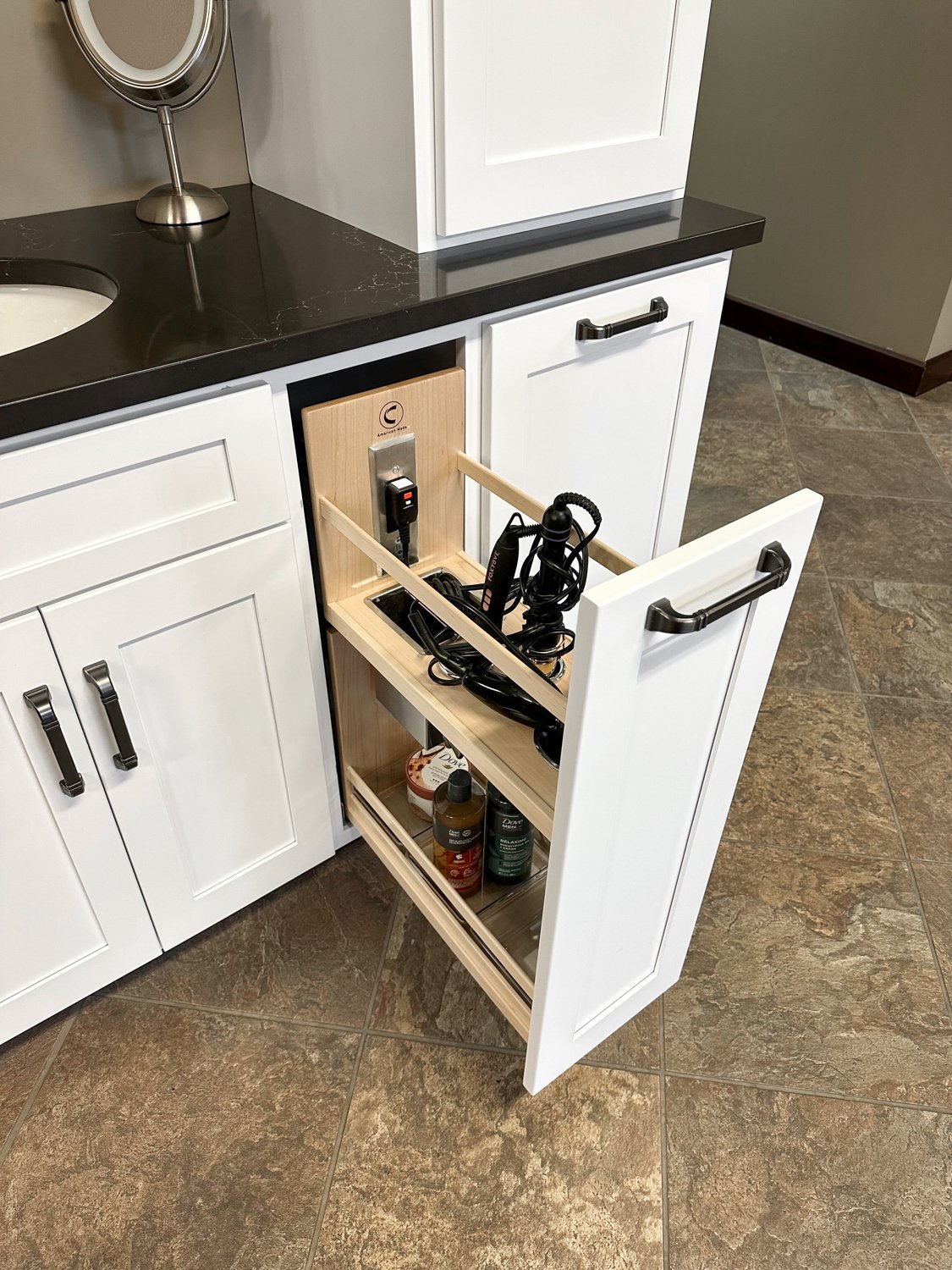Do I Need to Vent the Drawer Where my In-Drawer Outlet is Located?Updated a month ago

Venting is used to avoid heat build-up which can be an issue in tightly sealed environments such as the case with an oven. Cabinets, on the other hand, are not sealed, so there is a large volume of air in cabinets as well as air intake from the gaps surrounding the drawer fronts and doors.
Technology such as phones, tablets, laptops and chargers can warm when used. For example, when an iPhone is charged, it converts electrical energy from the charger into chemical energy stored in the battery. This process is not 100% efficient, and some of the energy is lost as heat. The amount of heat generated during charging can be considered minimal and is unlikely to be measured in BTUs in a practical context, as BTUs are a relatively large unit of heat.
For a rough estimate of heat generation, if you know the power consumption of the charger in watts, you can convert this to BTUs per hour (1 watt is approximately 3.412 BTU per hour). However, keep in mind that only a fraction of the power used in charging is converted to heat (the rest is stored in the battery), and this heat is spread over the charging period, so the actual BTUs generated would be quite small and not typically a concern for the device's operation or safety.
But the air exchange in the cabinet, or the volume of air in the cabinet, is high. It would take a warm item such as a phone, tablet or computer endless hours to generate enough heat to be of concern.
For example, a common drawer size is 21” x 15” x 5” or 1,575 cubic inches or .91 or about 1 cubic foot of air. We know that it takes 0.24 BTU of heat to change the temperature of one pound of air by one degree F and there are 0.0807 lbs of air in a cubic foot. So, to raise the temperature of your drawer from a standard 70° F to over 356° F the temperature where wood combusts it would take a warm device with a relatively low BTU a long time to heat the drawer space an additional 286 degrees. And it would take even longer in unsealed spaces like cabinets.
Plus, don't forget that USB-C (PD) has thermoregulation which prevents devices from getting hot when charging.
Our engineers have spent hundreds of hours ensuring our outlets are safe for residential and commercial use. When you install Docking Drawer outlets into drawers or cabinets, know that you’re adding a smart, simple, and most importantly—SAFE—solution to your home or business.
